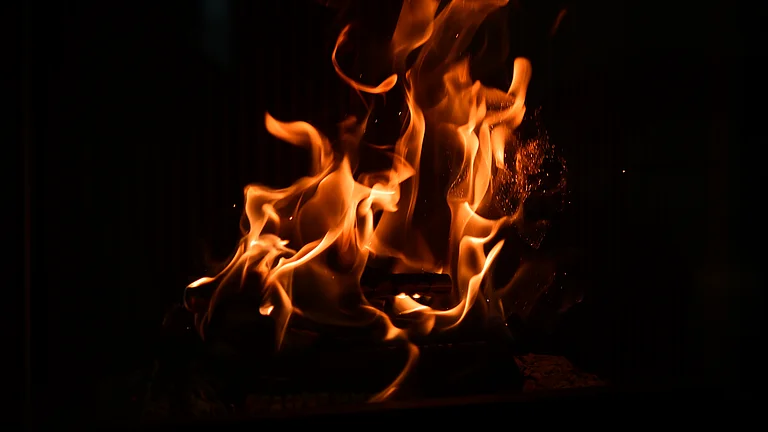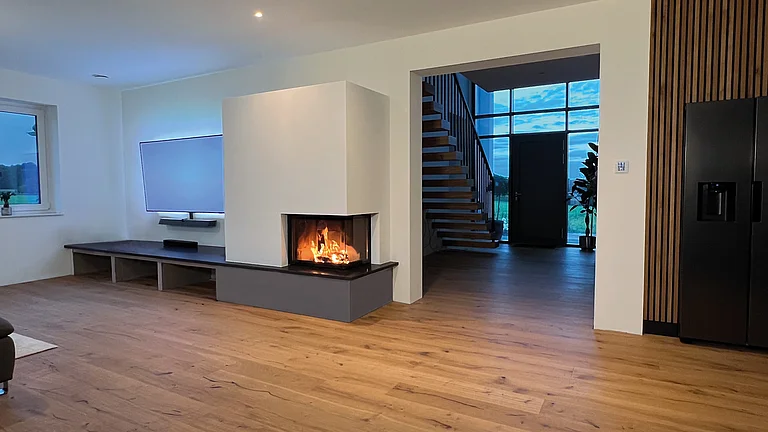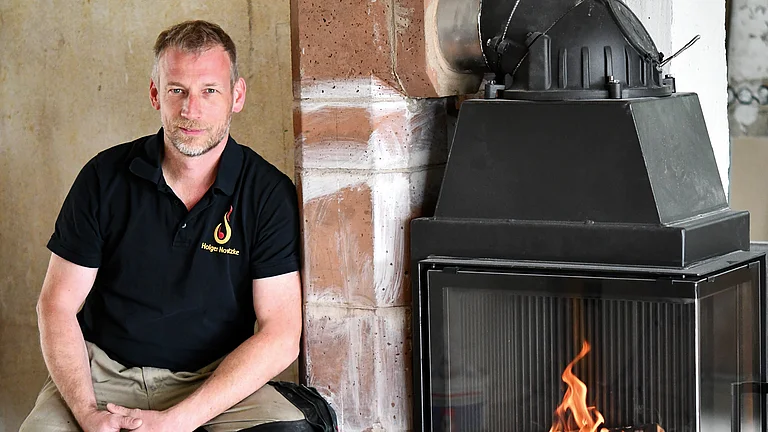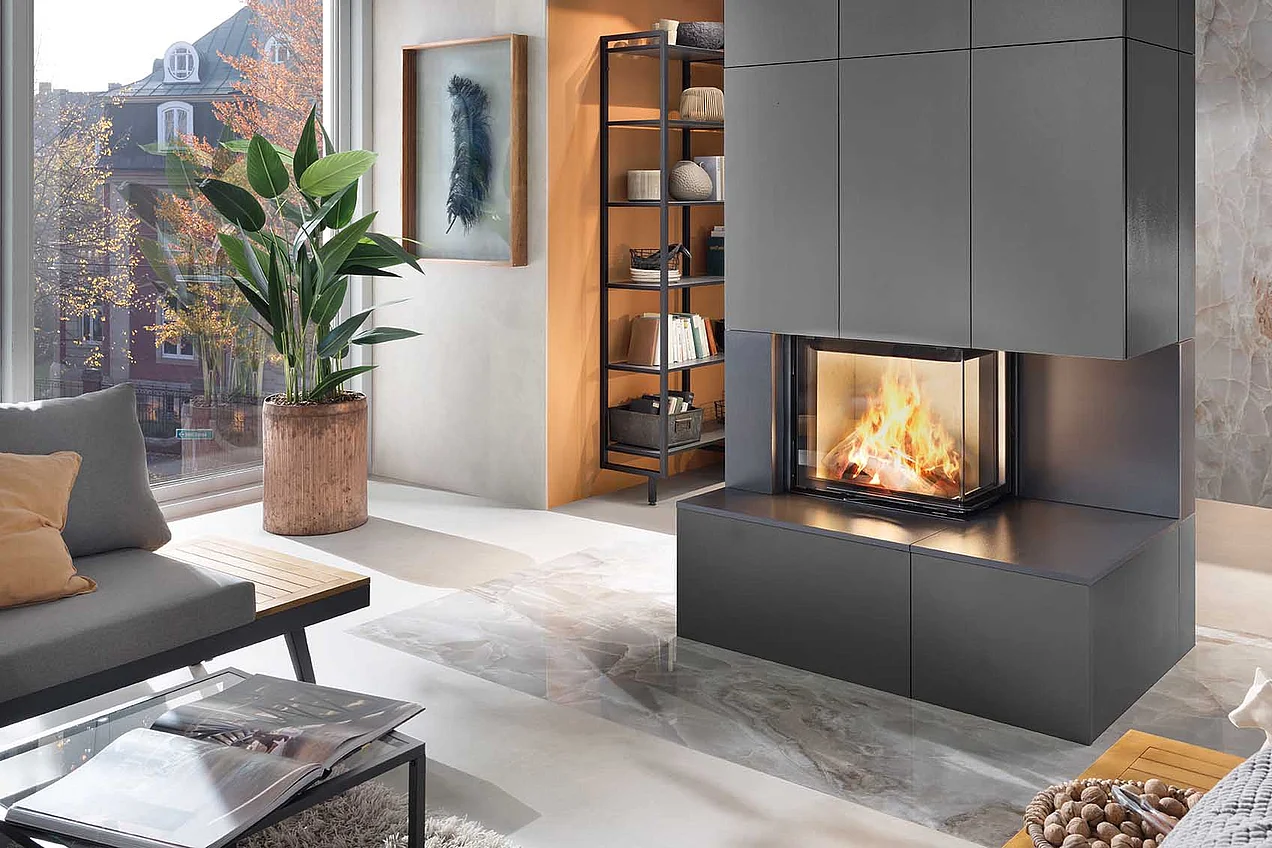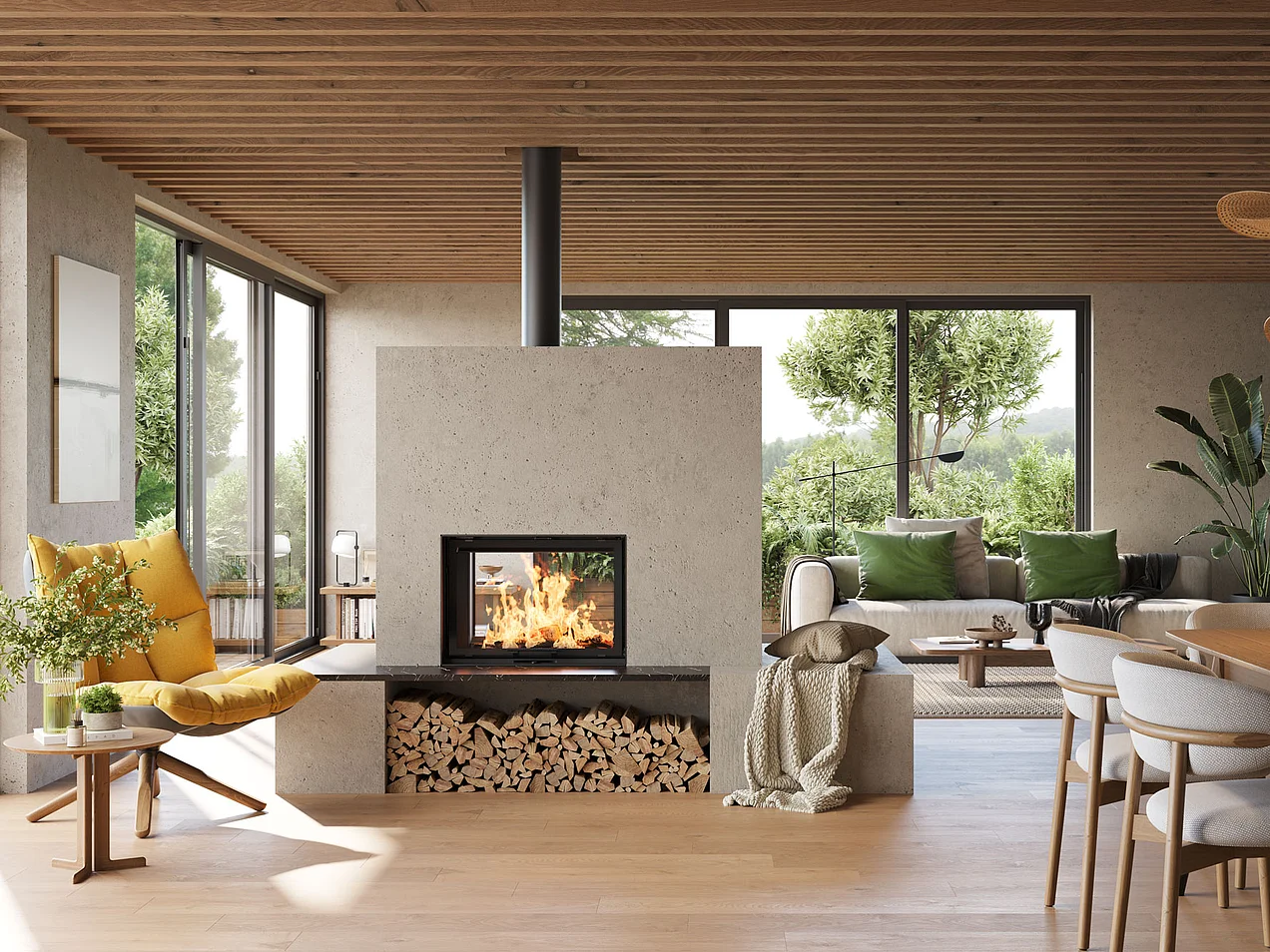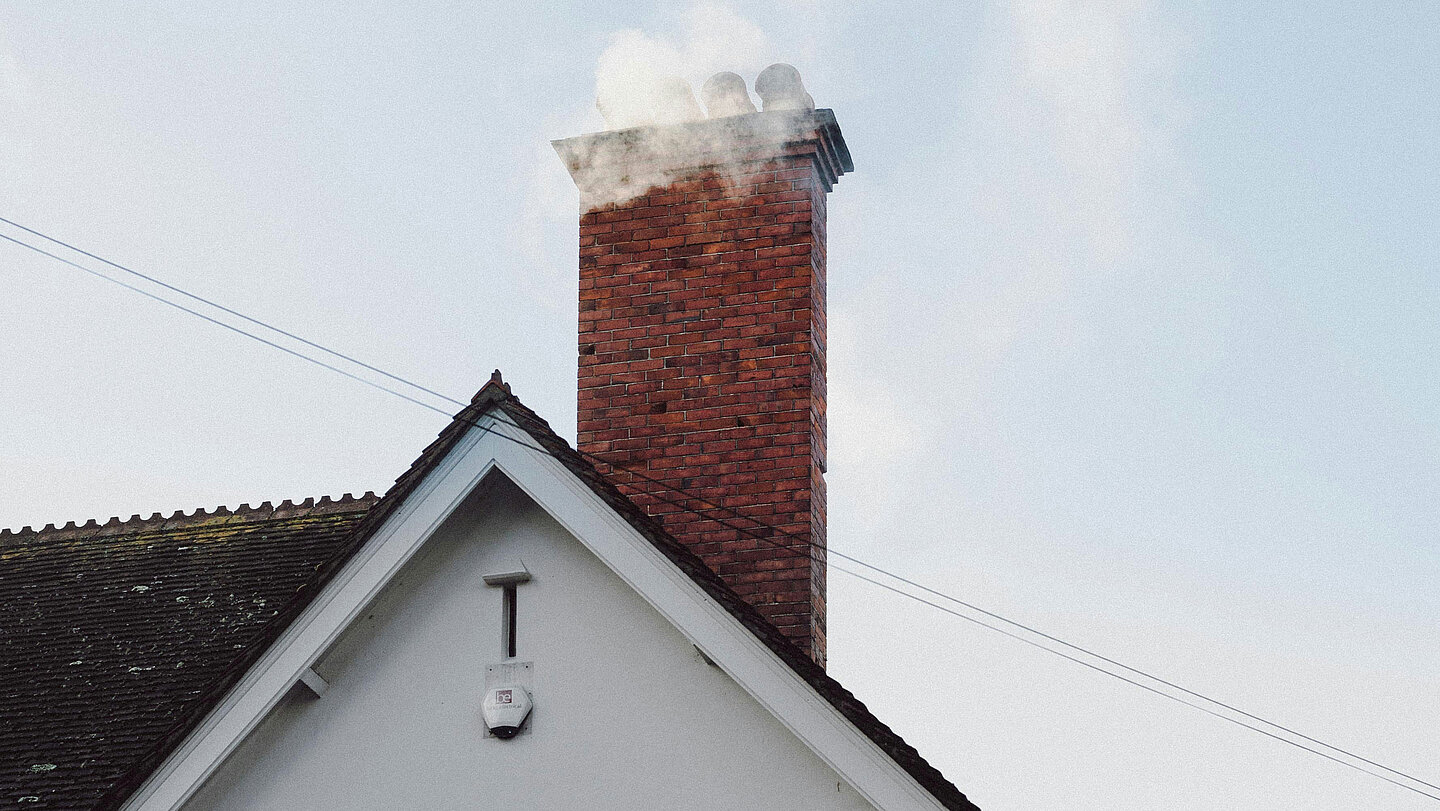
Building a house with a fireplace
Laws, efficiency & promotion
Construction in new buildings

Regulations
Legal framework (GEG & BImschV)
In Germany, modern single-room fireplaces may continue to be used in new buildings. The Building Energy Act (GEG) classifies wood as renewable energy. A minimum requirement of 65 % renewable energy applies to new heating systems, whereby a single-room fireplace may cover up to 10 % of the heating requirement. There is no general ban on this. However, old stove models (pre-2010) will be subject to stricter emission limits under the Federal Immission Control Ordinance (BImSchV) from 2025. Modern wood-burning stoves must therefore comply with the limit values of the 2nd stage of the BImSchV and Ecodesign Directive. In summary, this means that a wood-burning stove can heat a new building comfortably and contribute 10% to the 65% renewable heat obligation.
Financing
There are various funding opportunities for private builders if the new build is planned efficiently.
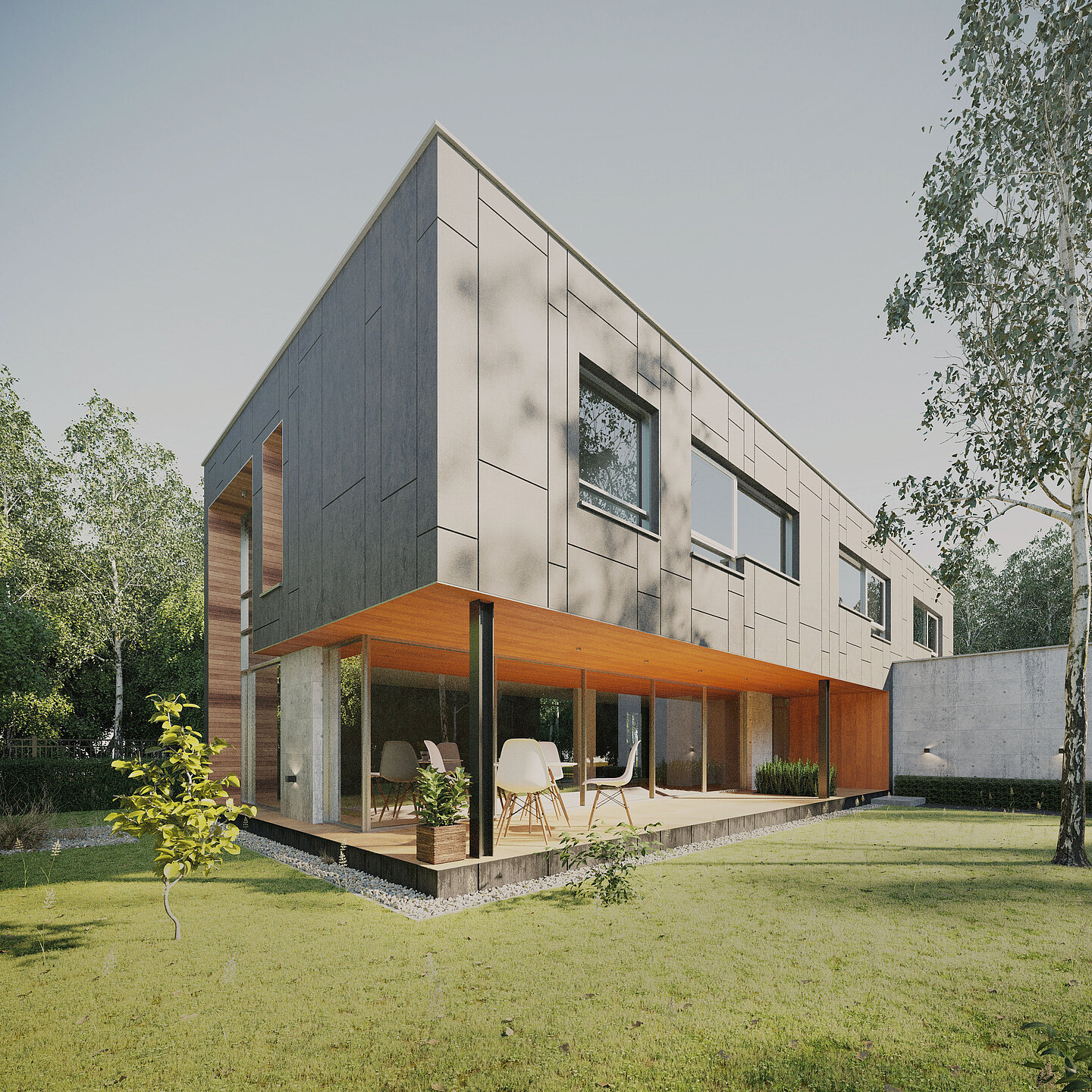
Climate-friendly new build
KfW
Low-interest loan (up to €150,000 per residential unit) for efficiency house level 40. The main heating system may not be operated with fossil fuels (oil/gas) or biomass. However, an additional single-room fireplace is permitted as long as it is not integrated into the central heating circuit. However, the purchase and installation costs for single-room fireplaces and chimneys are not subsidized in this program.

Home ownership for families
KfW program
Similar concept: Efficiency House 40 with Ecology Seal (QNG), which also does not include oil, gas or biomass heating. The same applies here: Wood-burning stoves are permitted as auxiliary heating, but only as a supplement and not eligible for subsidies.
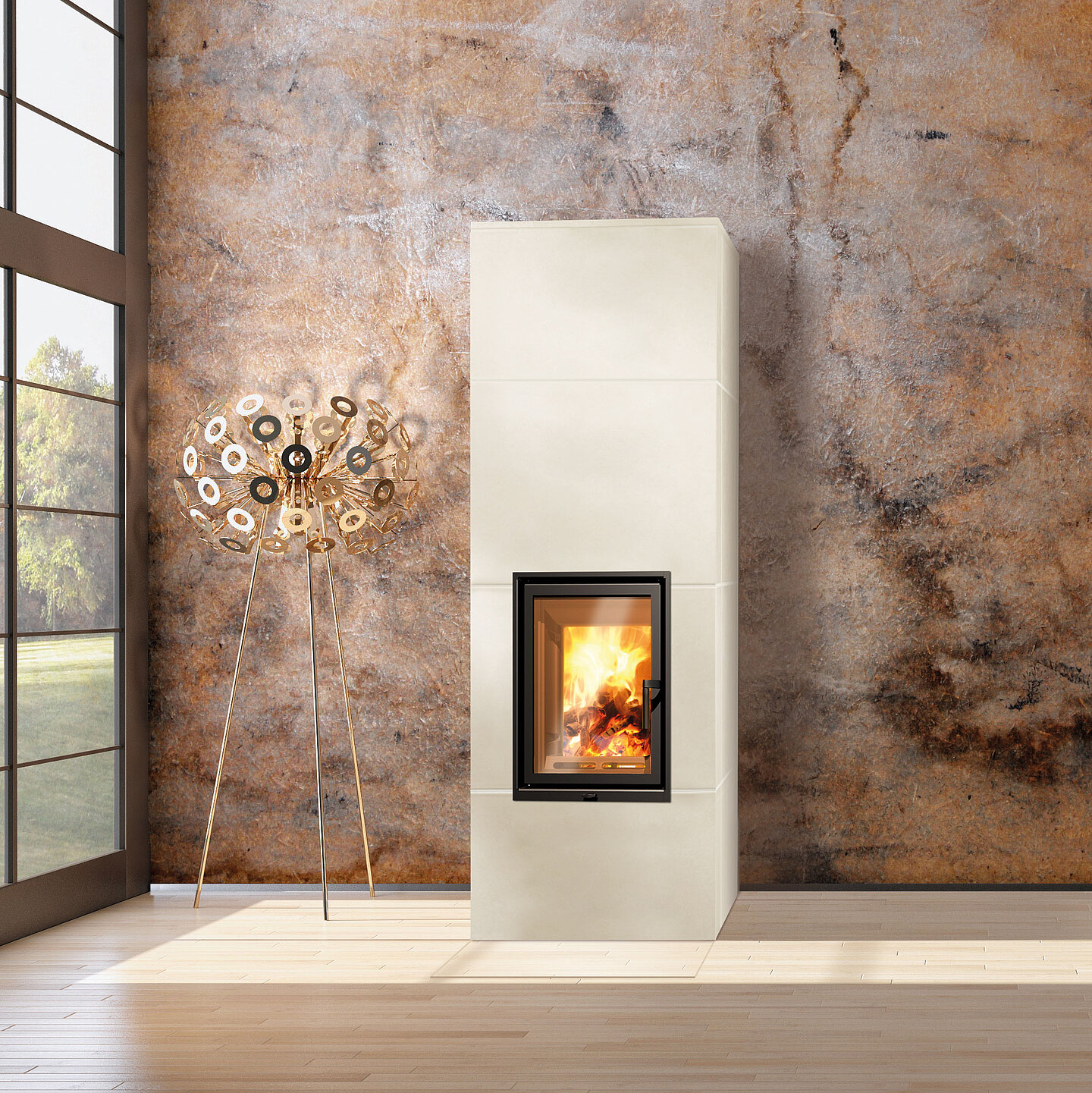
Federal funding for heating with renewable energies
BAFA/BEG
Subsidies (approx. 30-35%) for heating systems using renewable energy. In particular, water-bearing pellet stoves and wood gasifiers (with integrated water pocket) as well as combined appliances (pellets/wood chips/logs) from 5 kW are eligible for subsidies. This allows part of the heat to be fed directly into the central heating or hot water system.
Support programs
Overview
Climate-friendly new build
- Validity for fireplaces:
Yes, permitted as additional heating - Object of funding:
New buildings of efficiency house level 40, with QNG seal if applicable. - Note:
Not directly eligible for funding, but creditable
KfW home ownership for families
- Validity for fireplaces:
Yes, for Efficiency House 40 with QNG seal - Object of funding:
Construction of an Efficiency House 40 with QNG seal. - Note:
Fireplace only as an add-on
BAFA BEG Individual measures
- Validity for fireplaces:
Yes, for water-bearing pellet stoves - Object of subsidy:
Water-bearing wood-burning and pellet stoves with buffer tank. - Note:
Water-bearing wood-burning and pellet stoves with buffer storage tank. Subsidy of up to 35 % possible
Fireplace types
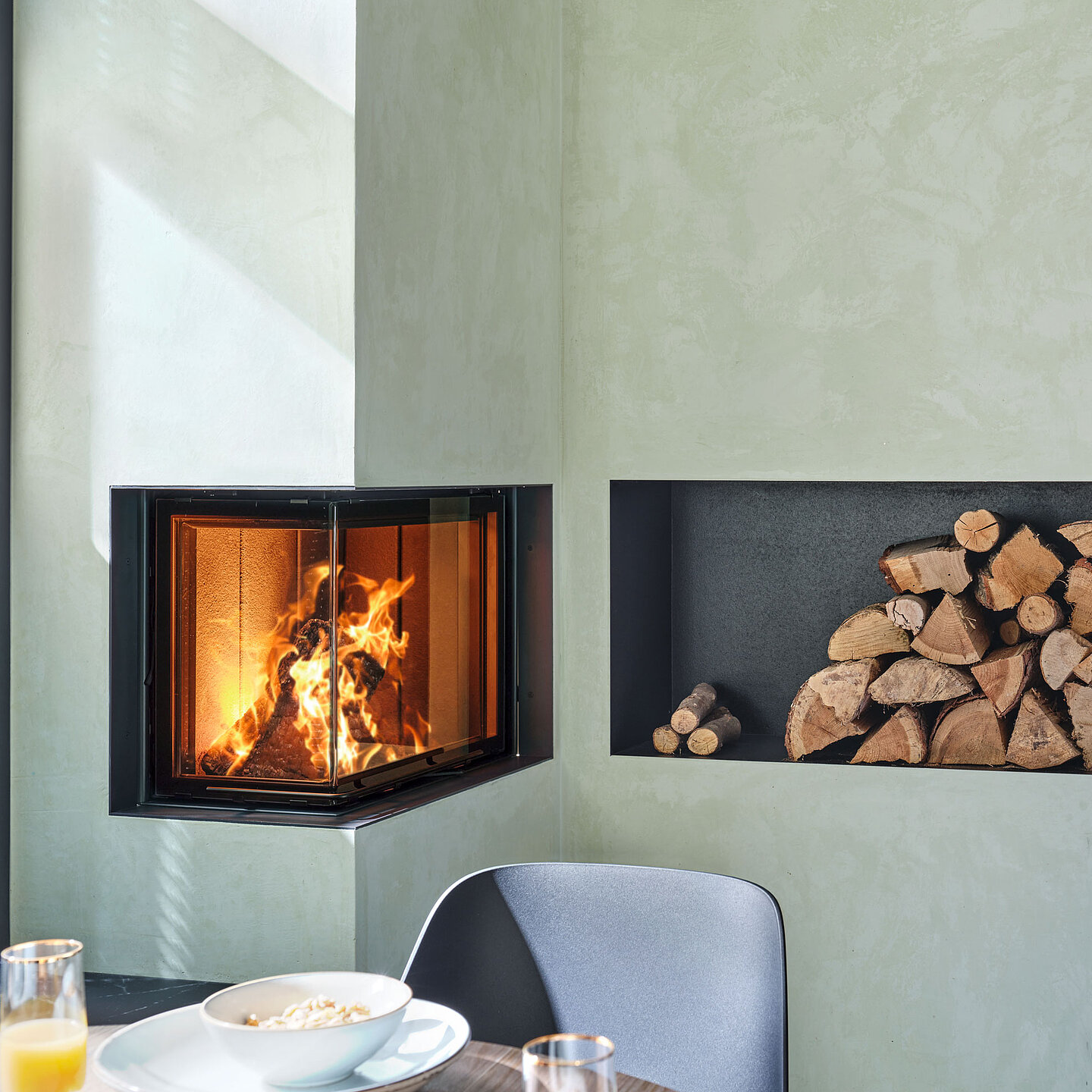
Wood fireplace
Wood-burning stoves burn renewable logs and are considered CO₂-neutral from an ecological point of view. The GEG expressly defines wood as a renewable fuel. Modern wood-burning stoves achieve high levels of efficiency and must meet strict exhaust gas standards (BImSchV Stage II and Ecodesign). From a climate perspective, burning wood is harmless. The expert Roland Irslinger (from 1982 to 2014 Professor of Forest Ecology at the University of Forest Ecology for Forestry in Rottenburg am Neckar and member of the Board of Trustees for Sustainable Management) emphasizes that no more CO₂ is released by heating with wood than by the natural decay of wood in the forest.
Although wood-burning fireplaces are subject to special regulations (only tested models from 2015), they can be retrofitted in new builds and are a sensible way to reduce heating costs.
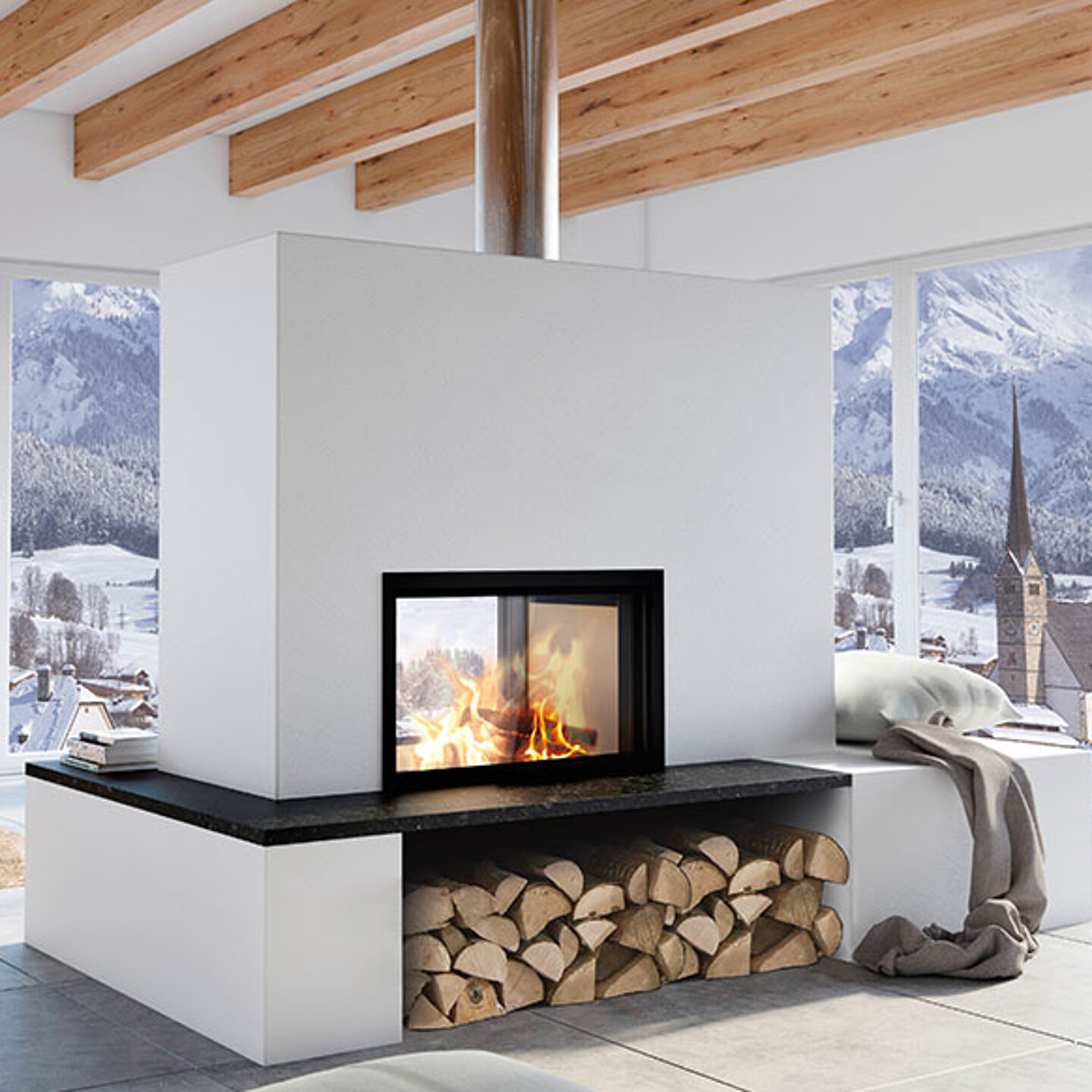
Water-bearing fireplace
Water-bearing fireplaces or stoves are equipped with an integrated heat exchanger water pocket. Some of the heat generated in the fire is fed into the central heating system and used to heat water. As a result, such a fireplace contributes efficiently to the overall heating concept.
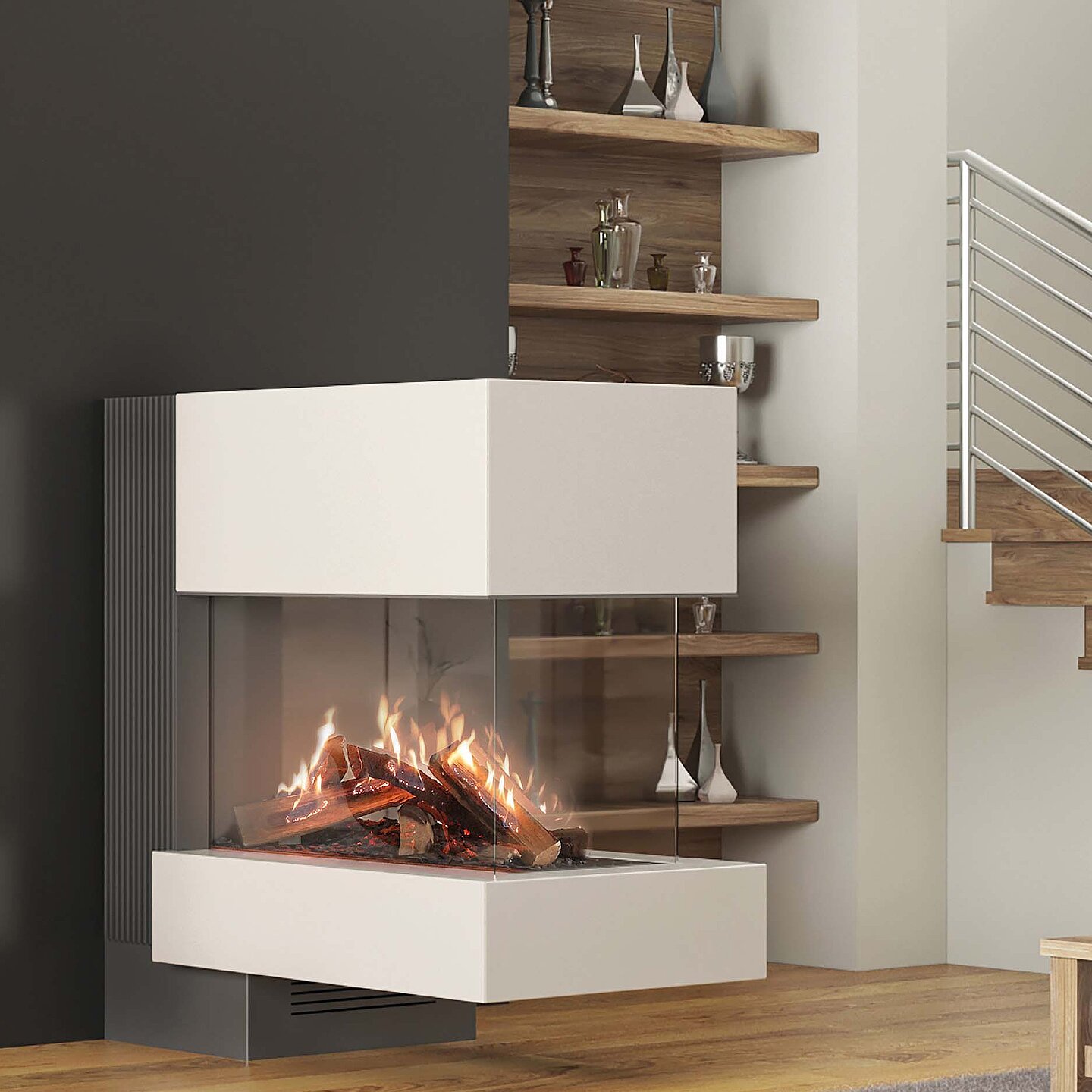
Gas fireplace
Gas fires (with natural gas or liquid gas) deliver heat quickly and often allow realistic flame projection. However, gas fuels are considered fossil fuels. The following therefore applies to subsidy programs for new builds: heating systems using gas are excluded.
A modern gas heating system only has to demonstrate a minimum proportion of renewable gas (e.g. biomethane, green hydrogen) after 2024. In practice, gas fireplaces are hardly eligible for subsidies in new efficiency house construction and are therefore less future-proof from today's perspective. Private builders prefer to rely on purely renewable heating systems (heat pumps, pellet central heating) and use wood-burning fireplaces more as an atmospheric addition.
Important prerequisites
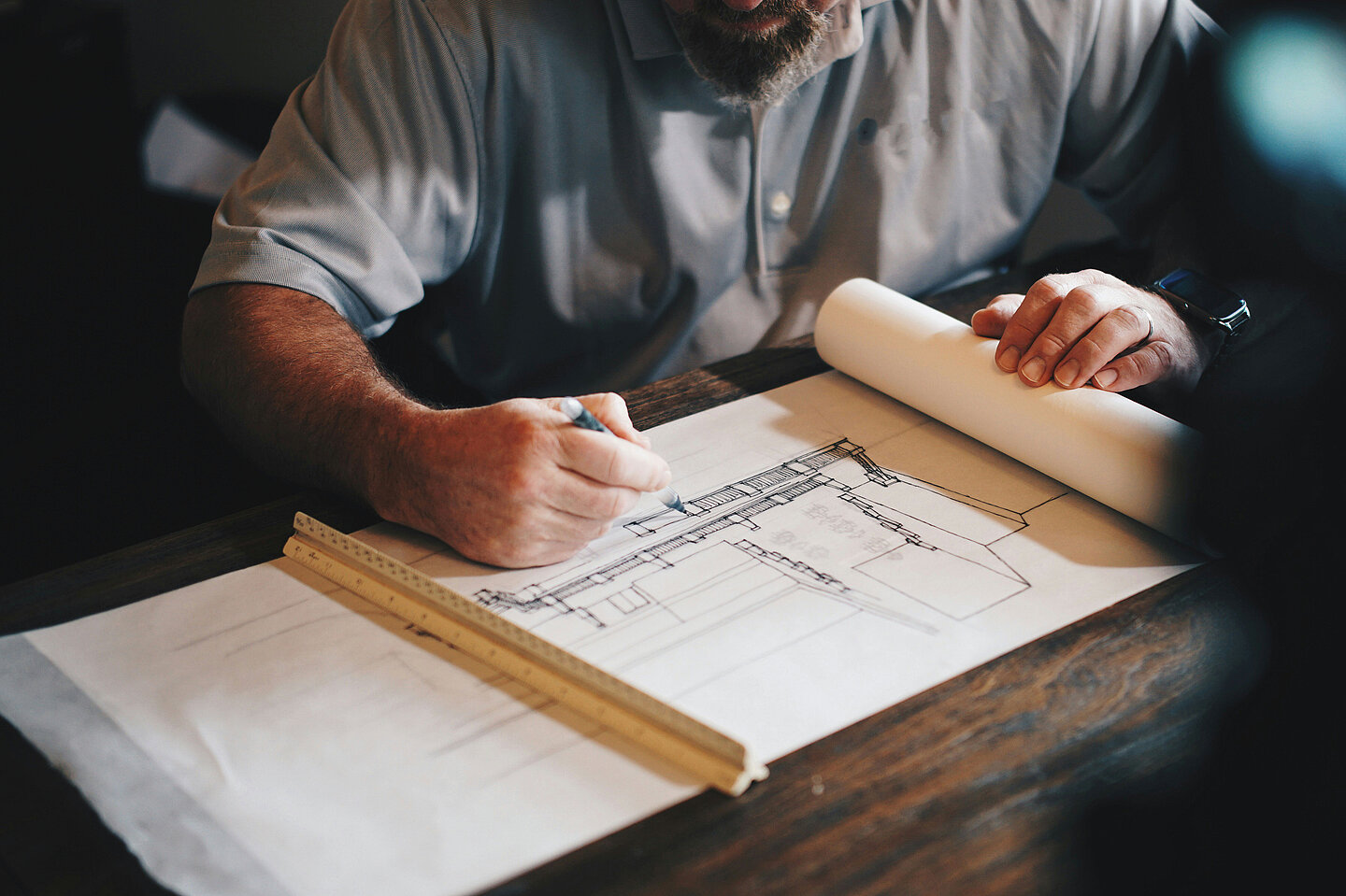
Regulations and standards
The Federal Immission Control Ordinance (BImSchV) and Ecodesign Directive must be complied with during installation. These set limit values for particulate matter, CO, OGC and NOx. In addition, structural requirements apply, such as the correct dimensioning of the chimney in accordance with DIN standards.
Structural requirements
Plan sufficient space and a suitable load-bearing capacity for the fireplace and chimney. Maintain fire protection distances and ensure a reliable supply of fresh air (e.g. supply air pipes in airtight new buildings).

Efficient stove operation
Modern single-room fireplaces should be operated independently of the room air (separate air supply from outside). Correct installation is subject to registration and is checked by the chimney sweep. Make sure that the single-room fireplace meets the energy standards (e.g. efficiency house requirements).
Early planning
Involve heating and stove engineers and chimney sweeps as early as the construction planning stage. A fireplace in a new build is significantly cheaper and easier to implement than retrofitting at a later date.
Worth knowing
Correctly informed
Everything about fire
Discover more
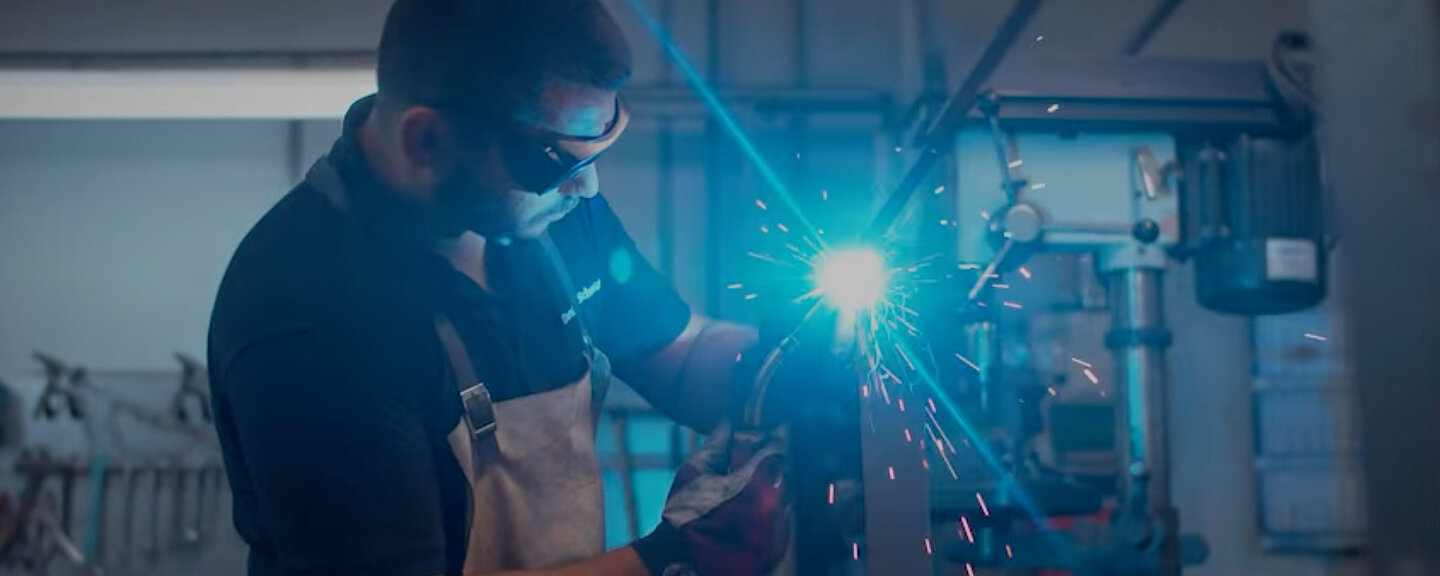
Camina & Schmid
We are on fire and on fire
With an inspiring vision and values that drive us
